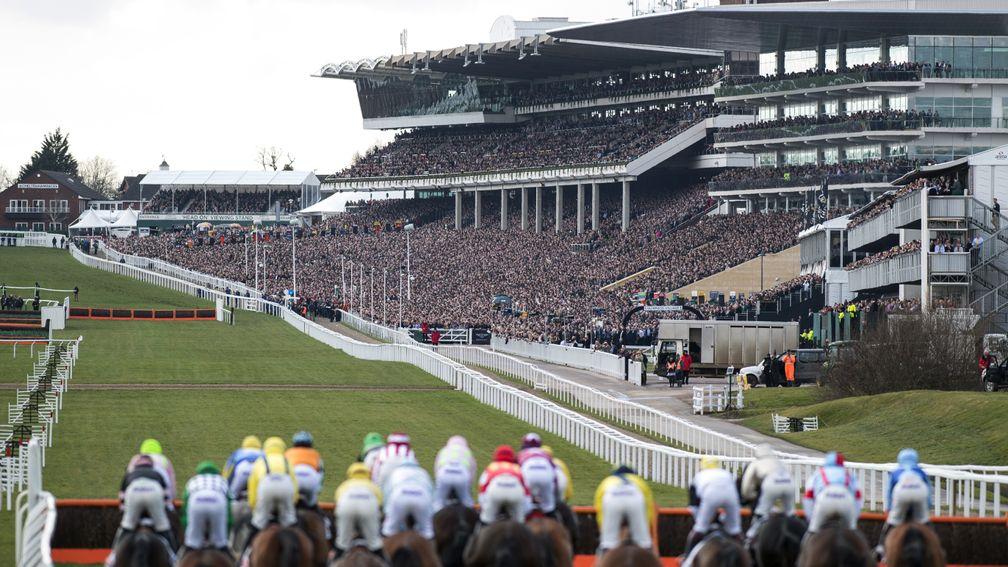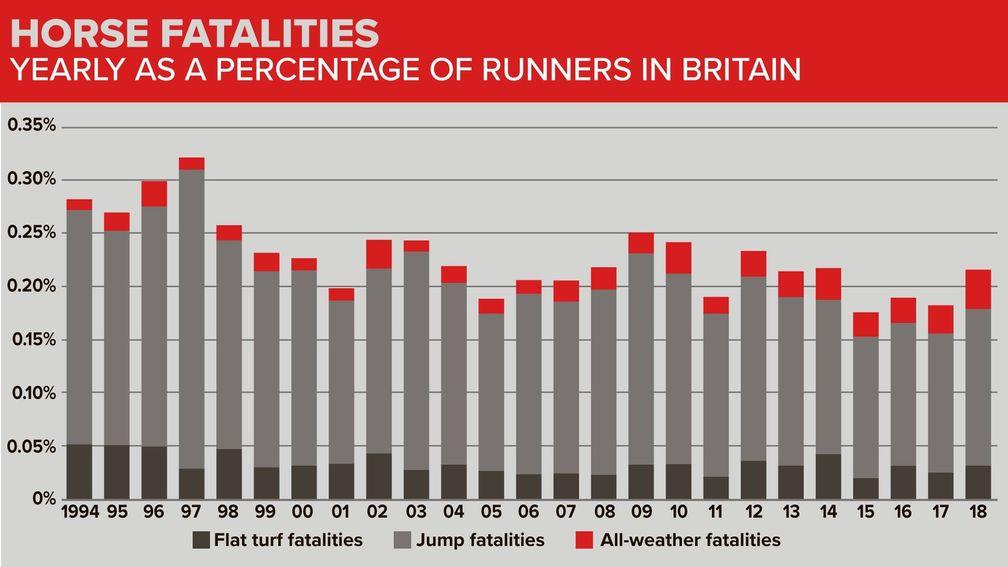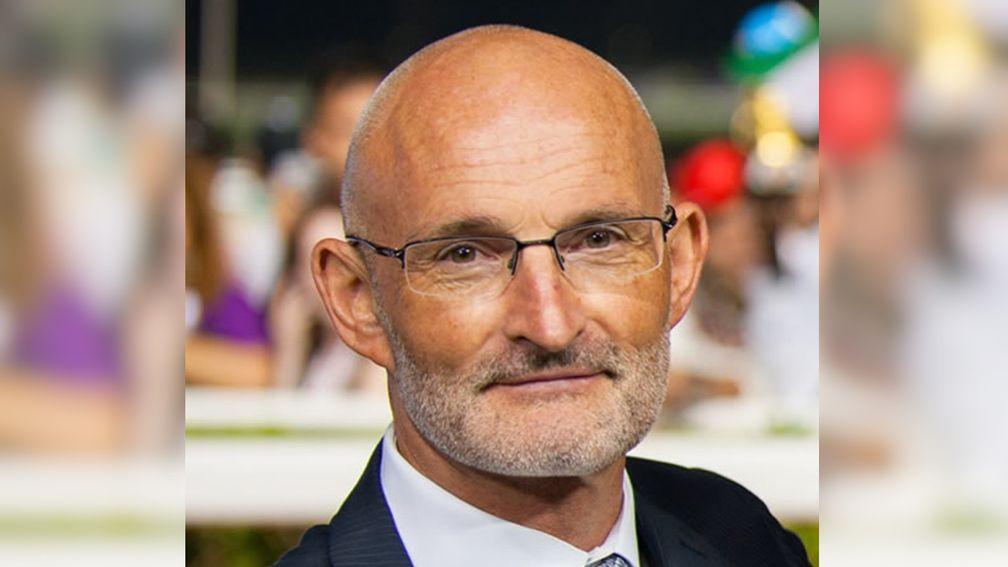Equine fatalities at highest level since 2014 as BHA pledges action

Equine fatalities on racecourses last year were at the highest level since 2014, figures released by the BHA on Monday revealed.
There were 202 deaths from 93,004 runners at a rate of 0.22 per cent, the same rate that was recorded in 2014. There were 167 deaths in 2017, a fatality rate of 0.18 per cent.
However, the five-year average – a figure less open to variance – remains at 0.20 per cent, the lowest on record, highlighting a positive trend this century.
The BHA, which last year faced calls in parliament to establish an independent welfare regulator, has pledged to take action to lower the fatality rate and "stay ahead of public opinion".

Chief regulatory officer Brant Dunshea said: "While it is not good practice to read too much into one year – and the overall trends still point towards an ongoing improvement in our safety rate – it is clear that we must take the issue of racecourse safety seriously and further raise our ambitions in this area.
"Government has publicly said as much and we must consider the risk to the long-term future of the sport should equine injuries lead to public perception of the sport changing.
"The BHA takes a leadership role on this issue and, as ever, we will drive the process of looking at our injury data this year and see what else could be done to make racing safer. The sport will work together in this regard, and we all share a communal responsibility.
"Our industry is full of people who love their horses and who are phenomenal when it comes to offering those animals the best possible care. The standards that we set in this industry are already exceptionally high, but changing public attitudes mean we have to do even better in the future.
"We must stay ahead of public opinion, and we cannot simply regulate our way to success – we all need to work together on this issue."
The breakdown between the two codes saw Flat and jump racing deaths increase in 2018, with 65 on the Flat, up from 47 the previous year.

There were 137 fatalities in jump racing last year compared to 120 in 2017.
The five-year average fatality rate of 0.20 per cent is significantly lower than 20 years ago when it stood at 0.29 per cent.
Current welfare initiatives
A phased trial using fluorescent yellow for all hurdles and guard-rails and fluorescent white for take-off boards in five training grounds across the country following research into what colours horses see best, alongside the roll-out of padded hurdles.
Research project to develop a predictive model for identifying risk factors for all jump racing
Gathering medication data to evaluate any link between fatalities and recent medication.
Developing a BHA-controlled thoroughbred database combining information gleaned from 30-day foal notification, throughout a horse’s racing career and post-retirement.
Assembling a cross-industry welfare board in 2019 which will have responsibility for developing the sport’s wider strategy, including further measures to enhance safety.
One factor which may have contributed to the increase in deaths last year is the exceptionally dry summer and the impact this had on the turf across British racecourses.
Faster turf means faster races which may lead to increased risk and the BHA will be assessing data – such as month-by-month statistics – to determine whether the hot summer had an impact.
The BHA's director of equine health and welfare David Sykes said: "We're looking to see what factors might have contributed to the safety record in 2018.
"This includes working closely with our racecourses to identify measures that could be taken to improve safety at every course, in particular those where the injury rate has been above the national average this year.
"This annual process frequently leads to changes to track layout, turf management and many other factors which contribute to safety."

One major project being undertaken is the development of a "predictive risk model" for jump racing, identifying risk factors, including non-course factors such as the horse's history and their rider.
This was a recommendation included in a 67-page report into the Cheltenham Festival’s six on-course fatalities in March. The report contained 17 recommendations for all Cheltenham fixtures and across jump racing as a whole.
Get exclusive insight from the track and live tipping with our up-to-the-minute service on racingpost.com and the Racing Post mobile app
Published on inNews
Last updated
- How to add Racing Post as a preferred news source in Google
- It's your LAST CHANCE to get 30% off Racing Post+ for a whole year - don't miss out on all our fantastic content!
- 'Absolute nonsense' to claim Haiti Couleurs was out of his depth in Betfair Chase
- Catterick: 'I loved him straight away' - hurdles debutant Indian River makes winning start for Adrian Keatley
- Officials have 'no concerns' at Ascot as track gears up for stellar two-day meeting
- How to add Racing Post as a preferred news source in Google
- It's your LAST CHANCE to get 30% off Racing Post+ for a whole year - don't miss out on all our fantastic content!
- 'Absolute nonsense' to claim Haiti Couleurs was out of his depth in Betfair Chase
- Catterick: 'I loved him straight away' - hurdles debutant Indian River makes winning start for Adrian Keatley
- Officials have 'no concerns' at Ascot as track gears up for stellar two-day meeting